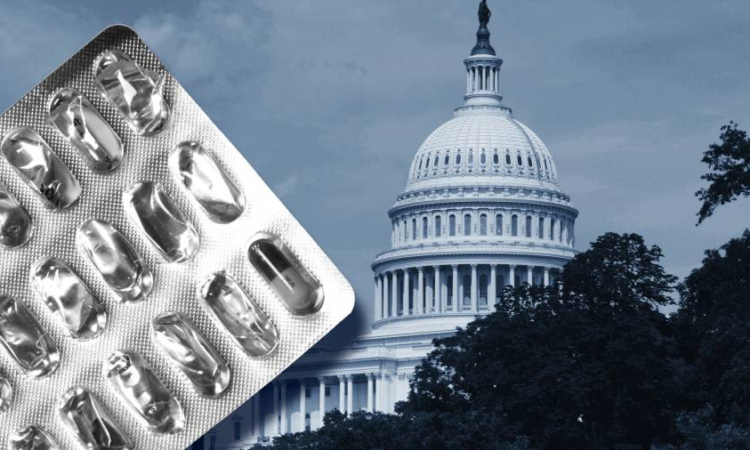
Political momentum to create a multibillion-dollar fund to reward developers of new antibiotics is growing in Washington. But it comes too late for Scynexis. With little demand so far for its new drug ibrexafungerp, the pharma company is scaling back promotion, seeking a new partner, and cutting its workforce.
Its product is just the latest in a series of antibiotics that have struggled to take off, alongside an even longer list of potential drugs that have not made it beyond the laboratory bench. A public health need for innovative treatments is increasingly being confronted by a reluctance to back products for fear they will be lossmaking.
“The market is fundamentally broken,” says Aleks Engels, a partner in Novo Holdings, a Danish life-sciences investor that has ploughed €130mn into potential treatments. “With the prospect of low volumes and low price, you end up not succeeding. We need to start rewarding companies that provide new drugs. We have to change the model.”
He says that, in the past two decades, the size of the antibiotic market has shrunk significantly, driven by investors and companies failing to focus sufficiently on genuinely breakthrough drugs, and by healthcare providers and intermediaries intensifying efforts to cut spending.
But he, and others campaigning for incentives to bolster the thin pipeline of antibiotics and other antimicrobial drugs, are starting to become a little more optimistic.
A fresh approach is being taken in the US with the Pasteur bill. This proposes that, instead of companies being paid for the volume of drugs prescribed, they would receive big upfront payments. The intention is to reward companies for developing the antibiotics, while discouraging doctors from overusing them and thus starting the cycle of antibiotic resistance once again.
The idea has earned bipartisan support in both chambers of the US Congress, as well as endorsements from the Department of Health and Human Services. It is also referenced in the White House strategy on the rising danger of antibiotic resistance. Staffers are now seeking to attach the bill, which would cost $6bn over 10 years, to other legislation before the current electoral term finishes this year.
Kevin Outterson, head of the non-profit Combating Antibiotic-Resistant Bacteria Biopharmaceutical Accelerator, and a lobbyist for the legislation, says: “We really need this urgently. The hour is late and the sky is dark. Everything in Washington is impossible until it gets done, but we’ve never had a more encouraging mood from leaders of Congress.”
The US is not alone in advocating change. The UK has a pilot project to provide guaranteed revenue to two new antibiotics, developed by Shionogi and Pfizer, that treat severe drug-resistant infections. More modest schemes to increase the use of rewards for novel treatments are in place in Sweden, Germany, and France.
The EU is considering new financial incentives, as well. They include an industry-backed scheme to grant developers of innovative antibiotics an extension to the patent life, and thus revenues, of any existing drug they control, or the right to sell these extensions to others.
But Christine Årdal, a senior researcher at the Norwegian Institute of Public Health, cautions that the patent extensions risk being “extremely and unpredictability costly, with no guarantee that countries will have access to the antibiotics”.
Elsewhere, Canada has convened a group of experts to report early next year on financial incentives for developers of new antibiotics. Japan, in the build-up to its G7 presidency, is exploring a similar policy.
Just as pressing is the need to ensure that the most appropriate antibiotics are available and being prescribed in poorer countries. Global Antibiotic Research and Development Partnership, a non-profit partnership which recently received fresh funding from Germany, is negotiating a mechanism whereby middle-income countries would pay to access a wider range of drugs than they would normally be able to. A key focus is India, as it prepares to chair the G20.
However, Yusuf Hamied, the chair of Cipla, the Indian generic drug producer, remains sceptical about that country’s willingness to pay for newer, more expensive antibiotics.
His company acquired the rights to plazomicin, an antibiotic approved in the US in 2018, from Achaogen, which struggled to generate sufficient revenues to recoup its investment and has since folded. “I’m totally disillusioned,” he says. “Doctors don’t use it. They prefer to prescribe cheaper antibiotics first.” He has held back from launching the medicine in Europe, after regulators there requested more clinical trials that would have required fresh investment.
He argues that tackling antimicrobial resistance needs to extend far beyond incentives to develop new drugs. “We need to control doctors and prevent misuse of drugs so they don’t prescribe unlimited quantities.”
That remains an issue in richer, as well as poorer, countries. Ironically, Thérèse Coffey, during her brief tenure as UK health secretary, this month reportedly proposed the idea of allowing pharmacies to prescribe antibiotics without the involvement of a doctor in an effort to save money.
But experts warned that such measures risked instead incurring a far greater financial and health burden in the future. While incentives for new drug development remain a goal, broader efforts to ensure appropriate, well-regulated use are just as important.






